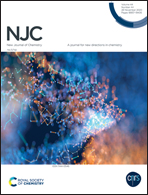Solar driven high efficiency hydrogen evolution catalyzed by surface engineered ultrathin carbon nitride†
Abstract
Photocatalytic water splitting is a promising approach to convert solar energy into storable hydrogen fuel. In theory, the optimization of light-harvesting and catalytic molecular conversion ability is necessary for high-efficiency hydrogen evolution; however, the establishment of a photocatalytic system composed of a light-harvesting center and an active center is limited by poor light absorption capacity, high overpotential for catalytic conversion, as well as the low efficiency of charge transfer between the two components. In this work, we demonstrate that a high-efficiency photocatalytic system consisting of two-dimensional carbon nitride (2D-C3N4) as the light-harvester and nickel sulfide (NiSx) as the active component can serve as an efficient catalyst for hydrogen evolution, wherein the tight interface formed using two-step solvothermal treatment bridges the charge transfer. The 2D structure of 2D-C3N4 can shorten the charge migration distance from the bulk to the contact interface with NiSx and minimize the charge recombination in the light-harvesting center. NiSx with a highly active surface can capture the photo-generated electrons through a tight contact interface, completing the conversion from H+ to H2. As a result, the hydrogen evolution rate of the optimal NiSx/2D-C3N4 catalyst achieves a high value of ∼4640 μmol g−1 h−1 under visible light irradiation, which is more active than most of the Pt-free 2D-C3N4 supported photocatalysts under the same reaction conditions.



 Please wait while we load your content...
Please wait while we load your content...